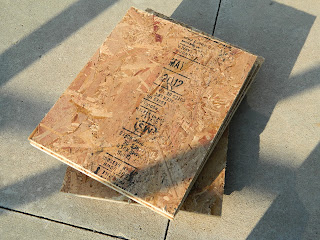(Mitch writing)
Most don't know or appreciate the process or the effort that goes into brewing one of the most delicious beverages on Earth. Over the last few months, I've delved into the craft of home brewing my own beer, and as most who have had the opportunity to sample some know, it's awesome, and I'm hooked.
This is just a brief overview of the brewing process here at our house. I hope you gain some insight into how it's all done (on a very small scale).
Getting going:
The process begins by mashing malted grains (barley, wheat, etc. that has begun to sprout, creating necessary enzymes that will break down starches into fermentable sugars). The mashing process consists of holding the grains in water at a specific temperature to allow those enzymes to break down that starch into something I can use. Here I am stirring up my grains with the strike water for the mash. I then let the whole pot sit for an hour at those temperatures to let them work. After the time's up, I can get going brewing!
Once the mash is complete, I pull my mesh bag with the grains out, let the sweet liquid (now called 'wort') drain out, and I can start boiling.
Waiting for the boil to start. The best part of brew day is enjoying the fruits of your labor, while laboring.
The boil has started! The boil will last for an hour, during which I will make multiple hop additions to reach the desired bitterness and hop flavor profile for this style.
The hops I am using for this recipe are Simcoe hops. They tend to lend bright, citrusy flavors and aromas to a beer.
Dumping some of the hops in at a point during the boil. I think I made four separate additions for this recipe.
After the boil is complete, I need to chill the wort to temperatures the yeast will like as soon as possible. I take the whole boil kettle inside and set it in a cold water bath in our sink with the water constantly running to cool it all down. This process usually takes between 30 and 45 minutes, depending on how cold the tap water is.
Once the wort is cool enough, it is time to pitch the yeast ('pitching' simply means to add it to the wort). Here I am rehydrating a dry packet of yeast to prove the yeast's viability.
The chilled wort is dumped into my fermenting bucket. In order for the yeast to be happiest, the wort needs to be well aerated and full of oxygen. Some people have high tech oxygen bubbler systems that infuse oxygen directly into the liquid; I just dump it from a height, making sure I make a lot of bubbles. It's worked fine so far!
Before I can start any fermentation, I've got to check my gravity to be sure I'm on target. Gravity readings indicate the density of a liquid. The amount of dissolved sugar in the wort represents itself as a certain gravity, telling me how much sugar there is available for the yeast to turn into alcohol. This reading is showing a gravity of 1.053.
I can now pitch my yeast, and let it do its work. Fermentation can take anywhere from a few days to a couple weeks, depending on the style of beer and the yeast used. The bucket gets sealed, and airlock is installed to vent the carbon dioxide gas expelled during fermentation, and I get to relax with another beer!
Three batches fermenting in our brewery corner. Max makes sure everything continues to run smoothly.






















